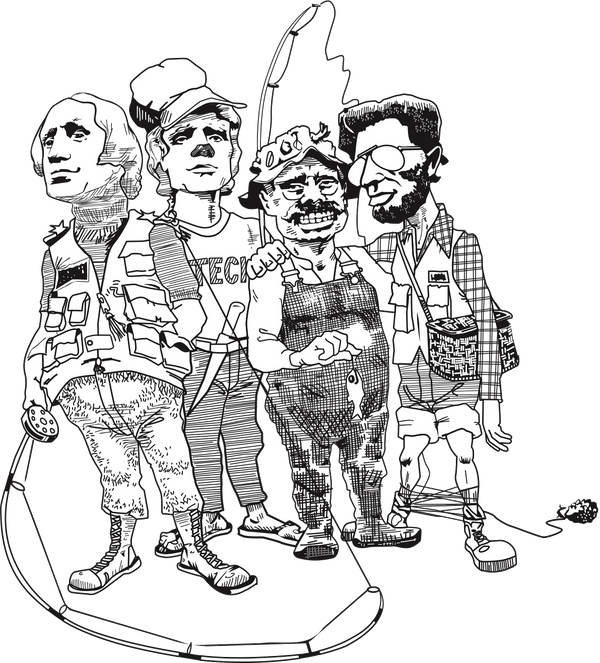History of the BHFF
The initial effort to start a fly-fishing organization in the Black Hills was undertaken by Scott Zieske and Dr. Elmo Rosario in 1979. Their vision was to create a Black Hills chapter of Trout Unlimited. This effort was not successful, largely because TU was a much different organization at the time, mandating requirements that were difficult for a fledgling organization in the Black Hills to fulfill.
The effort continued, and The Black Hills Flyfishers were founded in 1981 by Scott Zieske and Paul Mumm of Lead, as well as Roger Braunstein of Rapid City. Also serving on the Board of Directors at the time were Bob Chalberg, Dave Ohlen and Ross Johnson of Rapid City. Harry Slaughter, a prolific commercial fly-tier was very active in the BHFF in the early years, as were John Brewick and Denny and Mary Hayward.
A former member of California's Napa Valley Flyfishers, Zieske envisioned the entity as both a social and conservation organization. He duplicated their effort by hosting an annual equipment auction in order to raise funds for conservation projects. Denny McKay volunteered his services as auctioneer, and the first Black Hills Flyfishers auction was held in 1982.
Zieske also started the venerable BHFF newsletter, Flylines, which he produced from his Homestake Mining Company office in Lead. Annual BHFF dues were $10, and approximately thirty anglers from across the Black Hills were members. Monthly meetings were held at the MDU building in downtown Rapid City.
Perhaps most importantly, in 1982 Zieske spearheaded a habitat improvement project with special regulations in Spearfish Canyon. The habitat project was a joint effort between Homestake, the SDGF&P, the USFS, and the Black Hills Flyfishers. Design work was provided by Ron Glover, a fisheries biologist with the SDGF&P in Rapid City, and Homestake provided a significant amount of private funding. The Black Hills Flyfishers provided labor, as members laid sod over the newly-constructed wing deflectors, placed signs, and provided assistance in other areas as well. This was the first of many conservation projects that involved the Black Hills Flyfishers, and it established a model by which the fledgling conservation organization could improve local stream fisheries.
At about this same time, catch and release regulations were implemented on the "project" section of Spearfish Creek. The purpose of these restrictive regulations was to protect a population of rainbow trout that were successfully spawning in a one mile section of stream. Catch and release regulations were becoming commonplace in other areas of the country, and the GF&P was willing to try this in a controlled manner. Homestake was the owner of the property, and (largely due to Zieske's influence) was supportive of the regulations.
Initially, the regulation also called for barbless hooks, although that requirement was dropped a short time later. Today, the "project" section of Spearfish Creek still utilizes catch and release regulations for rainbow trout, which is almost completely due to the pioneering efforts of Scott Zieske and the Black Hills Flyfishers.

